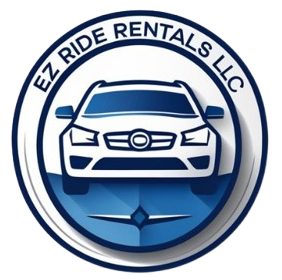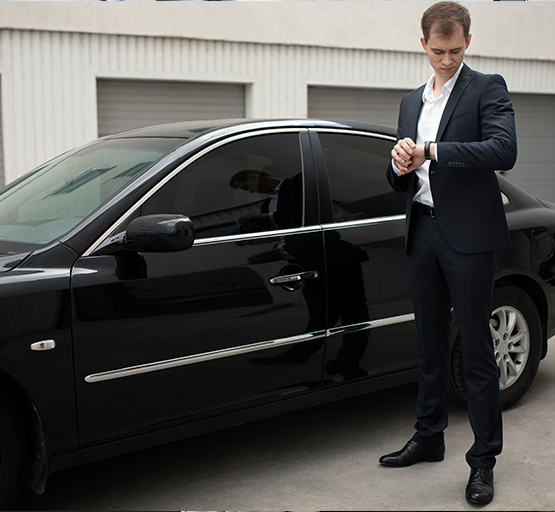Stepping off a long flight and seeing a busy rental counter can feel stressful, especially when you’re guarding every dollar of your travel fund. Hidden airport fees, insurance add-ons, and fuel surcharges often turn a “cheap” vehicle into an expensive shock once the bill is printed. The good news? A few smart moves before and just after you land can keep costs low without limiting comfort or safety. This blog walks you through each decision—from booking to drop‑off—using clear language and numbers you can trust. We’ll cover booking hacks, off-airport pick-ups, insurance basics, fuel tricks, inspection steps, credit‑card perks, and telematics tips, so you can drive away confident that you kept control of your wallet.
Book Early and Use Flexible Date Search Tools
Booking at least three weeks in advance almost always locks the lowest base rate. Many sites pull prices from the same global distribution systems used by airlines. These systems update every six to eight hours, so searching on different days of the week can reveal fresh deals.
- Compare full-size versus compact: Airports sometimes run out of smaller cars and upgrade you for free when demand spikes.
- Check prepaid but cancellable rates: Major platforms now let you hold a discounted rate and still cancel up to 48 hours before pick‑up.
- Watch exchange‑rate swings: If the price shows in a foreign currency, use a browser add-on or bank app to test the total in your home currency before paying.
Technical tip: Many booking engines rely on “dynamic pricing algorithms” that read your IP address. Using your phone’s data hotspot once or twice can present you as a new user, refreshing the pool of offers without cookies, and bumping the rate.
Pick Up Off‑Airport to Slash Surprise Fees
Airport concession fees range from 10 % to 30 % depending on local regulations. A ten-minute shuttle or rideshare to an off-airport branch can wipe those add-ons out. Before choosing this route, weigh shuttle frequency and opening hours against your arrival time.
- Check if the branch allows after-hours lock‑box returns—most do, but some charge “courtesy” fees for late drop-offs.
- Verify that your booking still offers unlimited mileage; a few city branches impose lower mileage caps than airport lots.
- Use maps to confirm there are no toll roads between the branch and your hotel; toll transponders rented from the desk cost far more than paying cash.
Technical tip: Many off-airport locations share inventory with the airport itself and can “pull” a vehicle over in under an hour if you call ahead. This shared fleet management is handled by an API tied to the central reservation system, so stock visibility on mobile apps is usually accurate.
Understand Insurance Terms Before Signing the Contract
Rental desks often push three main coverages: Collision Damage Waiver (CDW), Loss Damage Waiver (LDW), and Supplemental Liability Insurance (SLI). Each covers different risks, and buying all three may double your rate.
Key definitions
- CDW / LDW: Shifts the cost of repairs for collision or theft from you to the rental company, but often still carries a deductible.
- SLI: Raises liability limits above the tiny state minimums, safeguarding your assets if you’re sued.
- Personal Accident Insurance (PAI): Pays medical costs for you and passengers, but may duplicate your health policy.
Technical tip: Many credit cards include secondary CDW—meaning it pays what your own car insurance does not. Call the toll-free number on the back of the card and ask: “Does your benefit become primary if I decline CDW at the counter?” Having primary coverage through the card can save hundreds.
Mind Fuel Policies and Refill Smartly Before Return
Common fuel options include “Full‑to‑Full,” “Prepaid Fuel,” and “Full‑to‑Empty.” Full‑to‑Full is cheapest if you top off within 10 km of the return lot. Prepaid can be fair on trips that end at 4 a.m. when stations are closed.
- Use apps such as GasBuddy to locate the nearest 24-hour pump.
- Save receipts; some firms request proof if the gauge looks shy of full.
- Refuel slowly after the nozzle first clicks to avoid a short fill that appears full but drops a bar soon after you leave.
Technical tip: Modern pumps use temperature-compensated meters. Filling during cooler hours (early morning or late night) can reduce vapor loss, giving slightly better volume for the money—handy on long drives.
Use Credit Card Perks and Local Discount Programs
Beyond insurance, several cards refund certain road expenses:
- Roadside‑assistance fee rebates for jump‑starts or lock‑outs.
- Global Entry/TSA PreCheck statement credits freeing your schedule to return the car calmly.
- Partner fuel brands offering instant cents‑per‑gallon savings through linked‑wallet features.
Local discount tips: Tourist bureaus sometimes give coupon books that waive second‑driver fees or apply free GPS upgrades. Digital passes load vouchers through QR codes, letting agents scan your phone in seconds.
Technical tip: Near‑field communication (NFC) now powers many loyalty passes. Hold your phone to the agent’s reader; the POS logs the discount without manual code entry, reducing clerk error.
Drive Safer by Mastering Basic Rental Telematics
Newer cars carry a telematics box that captures speed, harsh braking, and location data. Some firms use these logs to fine motorists who cross borders or race.
- Ask if the unit is active; privacy rules differ by state and country.
- Obey speed limits; GPS-verified overspeed alerts can bring automatic fines.
- Keep Bluetooth off when not needed; the telematics unit sometimes pairs with your phone by default, syncing contacts.
Technical tip: Most devices plug into the OBD‑II port under the dashboard. When the ignition turns off, they transmit trip details over a GSM module. Knowing this helps you plan routes that respect contract rules.
Check Return Receipt and Hold Release Timelines
At drop‑off, wait while the agent scans the bar code and issues a zero‑balance receipt. Credit‑card holds—often $200–$500—should clear within five business days. Ask for the release code so your bank can speed up the process if funds remain pending.
- Photograph the fuel gauge and dash again after turning off the engine.
- Keep the signed slip until the final statement posts.
- Verify mileage if you had a limited-mile contract.
Technical tip: Many agencies use batch processing for holds. If your bank supports “real-time rail” transactions, it can remove the hold instantly once the batch file uploads. A quick call to card services with the vendor release code often helps.
Conclusion
Renting a car right after landing doesn’t have to drain your travel budget. By booking early, picking up off‑airport, understanding insurance, handling fuel wisely, documenting the vehicle, leveraging card perks, and respecting telematics, you shield yourself from the cost traps that catch unprepared drivers. EZ Ride Rentals LLC offers Affordable Car Rental Services that fit these best practices, helping you spend less on wheels and more on the memories that follow the open road.

